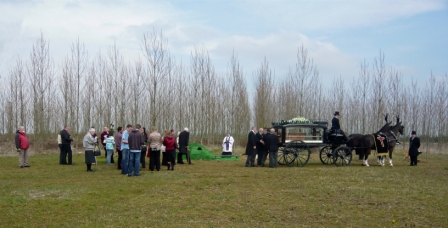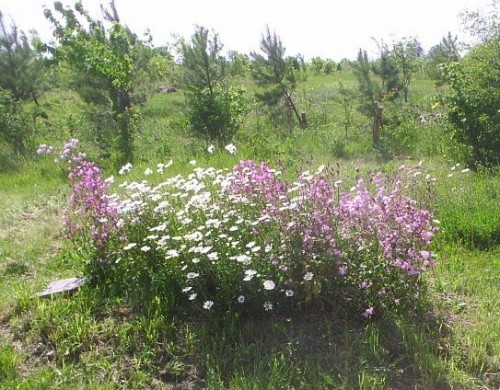St Albans Woodland Burial Ground
Posted by Richard Rawlinson
Back in 2001, The Telegraph ran a story about the Church of England opening its first woodland burial site, Arbory Trust, a consecrated 40-acre plot in Cambridgeshire with trees and flowers replacing gravestones.
‘Other sites cater for pagans and ‘New Age’ followers and do not offer a Christian burial,’ claimed the newspaper in its indomitable way, adding. ‘Unlike other woodland sites, the trust does not plant trees on top of coffins because of the implication, which is contrary to Christian teaching, that people are reincarnated in the tree.’
Two years later, The Telegraph revisited the subject, this time stating ‘Churches across Britain are to set up woodland burial sites because many of their existing graveyards and cemeteries are full’.
It quoted the Rt Rev Anthony Russell, then the Bishop of Ely, saying he believed that such burials would prove popular. ‘The woodland burial sites not only provide extra consecrated space, they also meet the wishes of people who want to be buried in an environmentally friendly setting which is close to nature,’ he said.
Almost a decade later, I searched the list of UK natural burial grounds on the website of the Natural Death Centre, and found just two consecrated sites: the aforementioned Arbory Trust and Bedfordshire’s St Albans Woodland Burial Ground, consecrated by the Diocese of St Albans.
Does anyone here know if there are more consecrated sites not registered with the NDC or if the CofE’s bid to unburden graveyards has not yet taken off—beyond people choosing cremation?
Meanwhile, traditional cemeteries from Clitheroe Cemetery in Lancashire to London’s New Southgate Cemetery have established wooded areas for people who wish to have more natural surroundings. Here.
The Arbory Trust




Re-reincarnated in the tree? Oh God bless the Telegraph
Reminds me of an old black cat we had, Jenny. When he died we buried him in the back garden: you could always tell the spot because the brussels sprouts would always grow higher and more luxurious above it. Being earthy and unimaginative we always put it down to composting – never guessing it could have been a strange annual transmigration of Sooty’s soul.
Amen
Re-incarnated as a brussel sprout. Well, that would certainly come as a surprise to most of the world’s religions I suspect! I am reminded of James Herbert’s ‘Fluke’ where the main premise was that the natural flow of re-incarnation was ‘down’ rather than ‘up’ (as in you are re-incarnated each time as a ‘lower’ life form as they live more ‘in the moment’ without concerns over past or future and so are closer to enlightenment.) Very Buddhist. I shall see if I can work a question into an exam paper at some point about Vipassana meditation on Buddhist sprouts as… Read more »
Excellent! And completely in the spirit of changing grade boundaries for GCSEs!
Don’t get me started on that 🙂
You raise an interesting question about consecrated burial grounds; it’s a subject which is sadly much misunderstood. Some natural burial grounds outside those owned by the church or administered by groups operating under their auspices have elected to go for consecration. Ketton Park is one, for example. However, consecration is really best suited for land in church ownership or designated areas in municipal cemeteries. There is a viable and simpler alternative for the private sector. There are two principle reasons for consecration of land owned by the Church: sanctification is one, but essentially the main purpose is to bring the… Read more »
Michael, many thanks for such an informative reply. Interesting stuff.
It is the ‘legal baggage’ of consecration which makes all the difference. It affords the greatest protection for land in English law and ensures that once land is set aside for burial it cannot be changed without an act of parliament. This protection is important for people of any faith position and simply comes from the fact that we have a state church, like it or not that is the way our country is set up. It is however disappointing that there are only two natural burial sites consecrated according to canon law, St Albans in Bedfordshire and the Arbory… Read more »
Charles, thank you very much for this. Something I didn’t know, for one. Very good point you make.
Although I have always been a champion of free choice I do find that the secular wing is becoming increasingly strident and the religio/cultural irredentist in me welcomes Charles Royden’s robust defence of consecration. Whilst it does provide the ‘greatest protection’ one does not have to look too far, however, to find examples of Acts of Parliament which have facilitated the disturbance of consecrated land: there’s a prime example in my own London borough. The term legal baggage might have offended Mr Royden, and if so I apologise but the issue here for would-be natural burial ground operators is one… Read more »